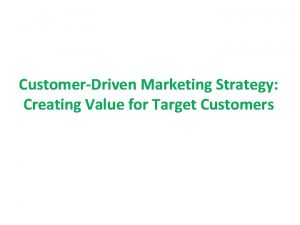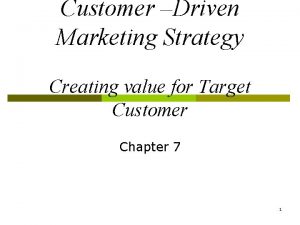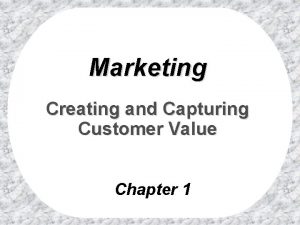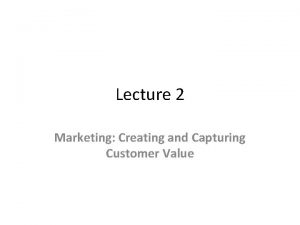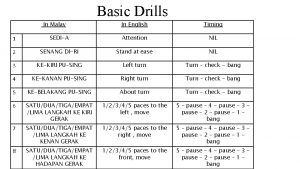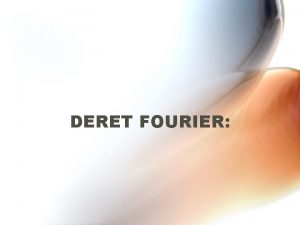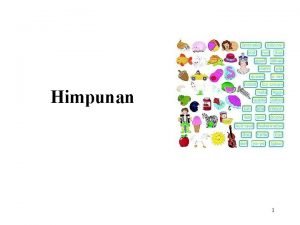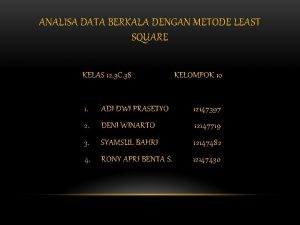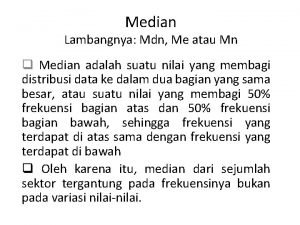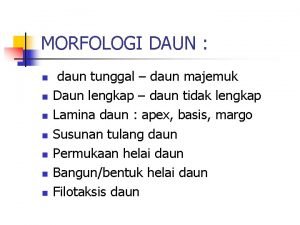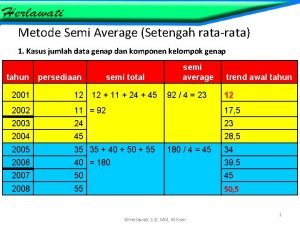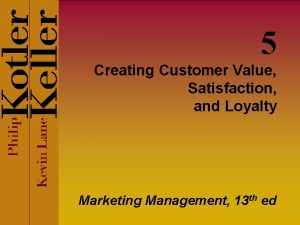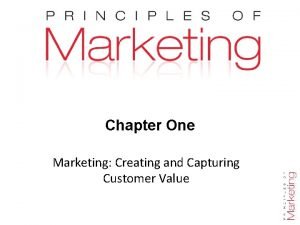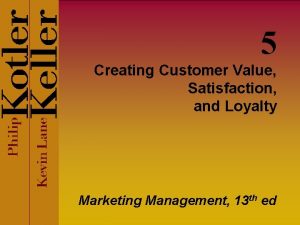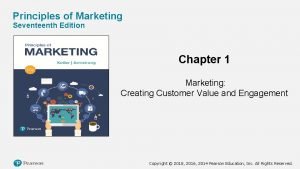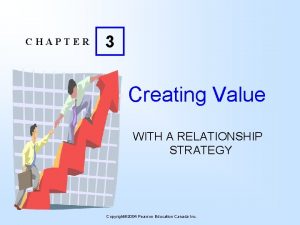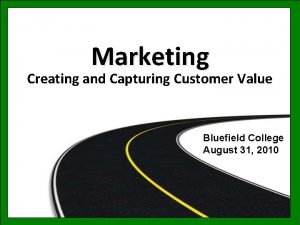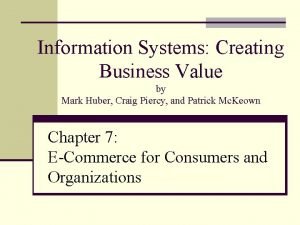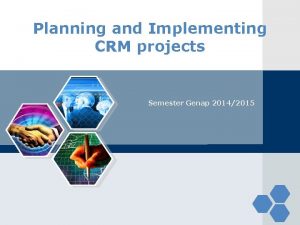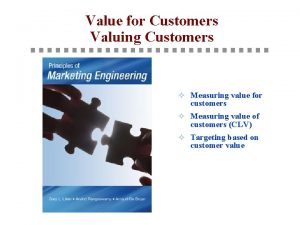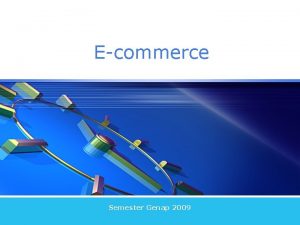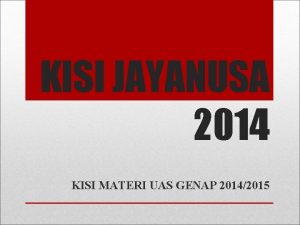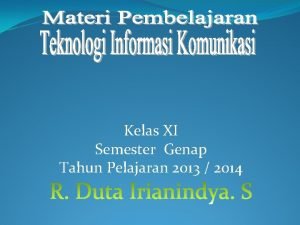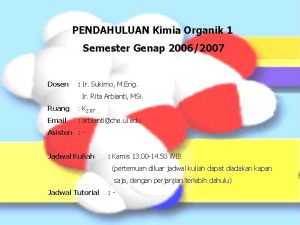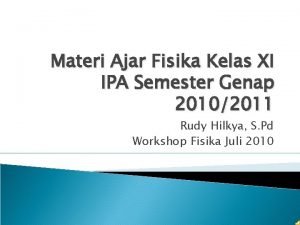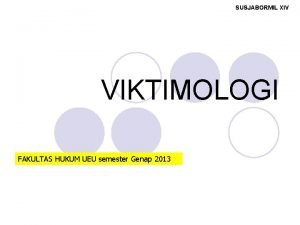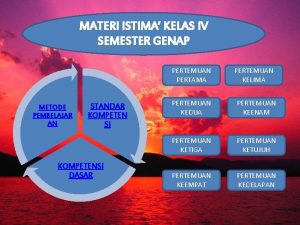Creating Value for Customers Semester Genap 20142015 Value












![Customising the 7 P’s [1] v Product § Solvay Interox, a chemicals company, customizes Customising the 7 P’s [1] v Product § Solvay Interox, a chemicals company, customizes](https://slidetodoc.com/presentation_image_h2/bc806bd5fba7d449ec1ee726ac8b0afb/image-13.jpg)
![Customising the 7 P’s [2] v Process § Xerox customises its service guarantee and Customising the 7 P’s [2] v Process § Xerox customises its service guarantee and](https://slidetodoc.com/presentation_image_h2/bc806bd5fba7d449ec1ee726ac8b0afb/image-14.jpg)

















- Slides: 31

Creating Value for Customers Semester Genap 2014/2015

Value Definition v Value is the customer’s perception of the balance between benefits received from a product or service and the sacrifices made to experience those benefits

Value Equation Value = Benefits ces Sacrifi

Sacrifices v Money: price of the product or service v Search costs: purchasing process may include exhaustive pre-purchase work in searching for solutions and comparing alternatives v Psychic costs: purchasing can be a very stressful and frustrating experience

Perceived Risk v Perceived risk is an element of psychic cost v Perceived risk takes a variety of forms: § Performance: occur when customer is not fully sure that the product will do what is required § Physical: customer feels that there may be some bodily harm done by product § Financial: there is danger of economic loss from the purchase § Social: customer feels that their social standing or reputation is at risk § Psychological: customer’s self-esteem or self-image is endangered by an act of purchase or consumption

How Do Customers Reduce Perceived Risk? v Delay purchase v Seek word-of-mouth endorsement v Negotiate service contracts v Seek additional information from advertising copy v Buy known brands v Deal with reputable suppliers v Seek performance guarantees v Buy with credit card (protection if product fails) v Negotiate discounts v Take out insurance v Demand pre-purchase trial

Total Cost of Ownership (TCO) v TCO looks not only at the costs of acquiring products, but also the full costs of using, and servicing the product throughout its life, and ultimately disposing of the product. v What is thought of as ‘consumption’ can be broken down into a number of activities or stages, including search, purchase, ownership, use, consumption and disposal. v TCO is an attempt to come up with meaningful estimates of lifetime costs across all these stages.

How Companies Compete - the 5 C’s v Conflict § Destroy the competition, e. g. BA v Laker Airways v Competition § Perform better than competitors at meeting customer requirements, e. g. Procter & Gamble v Unilever v Co-existence § Allow other companies to operate in their own niche, providing they don’t enter your market e. g. Cross® v Bic v Co-operation § Formation of strategic alliances, e. g. IBM & Sun Microsystems v Collusion § Conspire with competitors to restrain competitive behaviours, e. g. O. P. E. C.

Value Proposition Definition v A value proposition is the explicit or implicit promise made by a company to its customers that it will deliver a particular bundle of value-creating benefits

Value Delivery Strategies v Operational excellence: company does a limited number of things very efficiently, at very low cost and pass on those savings to customer v Product leadership: provide best products, services or solutions to customers v Customer intimacy: adapt their offers to meet the needs of individual customer

Sources of Customer Value in the Marketing Mix v Good marketing mix • product • price • promotion • place v Service marketing mix • product • price • promotion • place • process • participants • physical evidence

Customisation v Customisation § has both cost and revenue implications. § may mean the loss of economies of scale thus increasing unit costs. § means that companies have to be aware of and responsive to customers’ differing requirements § Configurator technologies assist in customising products § has been the norm in B 2 B markets for many years § any of the 7 Ps of the marketing mix can be customised
![Customising the 7 Ps 1 v Product Solvay Interox a chemicals company customizes Customising the 7 P’s [1] v Product § Solvay Interox, a chemicals company, customizes](https://slidetodoc.com/presentation_image_h2/bc806bd5fba7d449ec1ee726ac8b0afb/image-13.jpg)
Customising the 7 P’s [1] v Product § Solvay Interox, a chemicals company, customizes its hydrogen peroxide product for textile industry customers v Price § Dell Computer offers lower prices to its larger relationship customers than its small office-home office (SOHO) customers v Promotion § Ford customizes communications to its dealership network. v Place § Procter and Gamble delivers direct to store for its major retail customers but not smaller independents.
![Customising the 7 Ps 2 v Process Xerox customises its service guarantee and Customising the 7 P’s [2] v Process § Xerox customises its service guarantee and](https://slidetodoc.com/presentation_image_h2/bc806bd5fba7d449ec1ee726ac8b0afb/image-14.jpg)
Customising the 7 P’s [2] v Process § Xerox customises its service guarantee and recovery processes for individual customers v People § Hewlett Packard creates dedicated virtual project groups for its consultancy clients v Physical evidence § Thomson and other major tour operators overprint their point -of-sale material with travel agency details

Mass Customisation Definition v The use of flexible processes and organizational structures to create varied and even individually tailored value propositions, with neither a cost nor a lead -time penalty

Types of Mass Customisation Type of mass customisation Match–to-order or locate-toorder How it works Example Selection of existing standard products or services to match customer requirements Cars Bundle-to-order Bundling of existing products and services to suit customer requirements Conferences Assemble-toorder Assembly of products or services from existing standardised components or processes Computers Make-to-order Manufacture of customised products including components Tailored suits Engineer-toorder Customer co-designs products or services which are then made-to-order Aircraft

Mass Customisation Questions for CRM Strategists v Do customers want customised products and services? v What degree of customisation is desired? v Are customers willing to pay a premium for customisation?

Value from Products v product innovation v additional benefits v product-service bundling v branding v product synergies

Major Perspectives on Service Quality v Conformance to specification § This is consistent with Philip Crosby’s view of quality. Conformance to specification might mean producing error-free invoices, delivering on-time, in-full as promised to customers, or acknowledging a customer complaint within 24 hours. v Fitness for purpose § Joseph M. Juran advanced the point of view that quality means creating products that are well suited to customer requirements, and which therefore meet their expectations. It is the customer, not the company, who decides whether quality is right.

SERVQUAL Model of Service Quality Reliability Ability to perform the promised service dependably and accurately Assurance Knowledge and courtesy of employees and their ability to convey trust and confidence Appearance of physical facilities, equipment, personnel and communication materials Tangibles Empathy Provision of caring, individualised attention to customers Responsiveness Willingness to help customers and to provide prompt service

SERVQUAL Gaps Model Word of mouth communications Personal needs Past experience Expected service Customer Gap 5 Perceived service Service delivery (incl. pre- and post contacts) Gap 1 Gap 3 Company Translation of perceptions into service quality specifications Gap 2 Management perceptions of customer expectations Gap 4 External communications to consumers

Service Guarantee Definition v A service guarantee is an explicit promise to the customer that a prescribed level of service will be delivered

Service Level Agreement Definition v A service level agreement is a contractual commitment between a service provider and customer that specifies the mutual responsibilities of both parties with respect to the services that will be provided and the standards at which they will be performed

A Variety of SLA Metrics v Availability § The percentage of time that the service is available v Usage § The number of service users that can be served simultaneously. v Reliability § The percentage of time that the service is withdrawn or fails in the time period v Responsiveness § The speed with which a demand for service is fulfilled. v User satisfaction § This can be measured at the time the service is delivered or periodically throughout the agreed service period.

Service Recovery Definition v Service recovery includes all the actions taken by a company to resolve a service failure

Complaints-handling Process v A successful complaints handling process enables companies to capture customer complaints before customers start spreading negative wordof-mouth or take their business elsewhere. v Research suggests that negative word-ofmouth can be very influential. Up to twothirds of customers who are dissatisfied do not complain to the organisation. They may, however, complain to their social networks. v Unhappy customers are likely to tell twice as many people about their experience than customers with a positive experience.

Why don’t unhappy customers complain? v They feel the company doesn’t care. Perhaps the company or the industry has a reputation for treating customers poorly v It takes too much time and effort v They fear retribution. Many people are reluctant to complain about the police, for example v They don’t know how to complain.

Value from People at Nortel “At Nortel we believe that our people are our strength. Their knowledge, commitment, and talents drive our success. ”

Value from Communication – 3 Key Processes v Disintermediation: direct communication v Personalisation: tailor offers and communications to individual customer v Interactivity

Strategic options for electronic channels v No Internet sales v Internet sales by reseller only v Internet sales by producer only v Internet sales by all

References v Francis Buttle, Customer Relationship Management: Concepts and Technologies, 2 e, Elsevier Ltd. , 2009 v Baran, Galka and Strunk, Principles of Customer Relationship Management, South-Western, 2008
 Site:slidetodoc.com
Site:slidetodoc.com What is a customer driven marketing strategy
What is a customer driven marketing strategy Materi akidah akhlak kelas 7 semester genap
Materi akidah akhlak kelas 7 semester genap Capturing value from customers
Capturing value from customers Creating and capturing customer value
Creating and capturing customer value Build profitable relationships and create customer delight
Build profitable relationships and create customer delight Attract new customers by promising superior value
Attract new customers by promising superior value Metode trend setengah rata-rata data ganjil genap
Metode trend setengah rata-rata data ganjil genap Nombor genap in english
Nombor genap in english Metode semi rata rata data genap
Metode semi rata rata data genap Soal deret fourier
Soal deret fourier Materi deret fourier
Materi deret fourier Notasi pembentuk himpunan
Notasi pembentuk himpunan Metode least square genap
Metode least square genap Contoh median data
Contoh median data Contoh daun majemuk
Contoh daun majemuk Metode semi average
Metode semi average Creating customer value satisfaction and loyalty
Creating customer value satisfaction and loyalty Marketing concept
Marketing concept What are customer value satisfaction and loyalty
What are customer value satisfaction and loyalty Creating customer value satisfaction and loyalty
Creating customer value satisfaction and loyalty Principles of marketing chapter 1
Principles of marketing chapter 1 Define the relationship chapter 3
Define the relationship chapter 3 Marketing creating and capturing customer value
Marketing creating and capturing customer value Yas spread to benchmark
Yas spread to benchmark Creating business value through information technology
Creating business value through information technology Contoh value creation adalah
Contoh value creation adalah Referat mall
Referat mall Smärtskolan kunskap för livet
Smärtskolan kunskap för livet Frgar
Frgar Start för skala
Start för skala Epiteltyper
Epiteltyper
